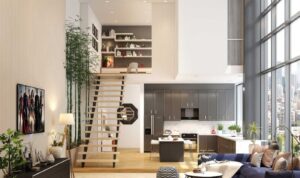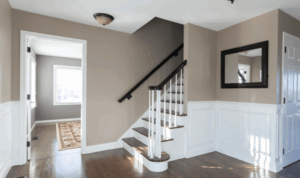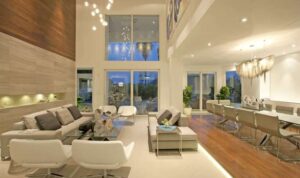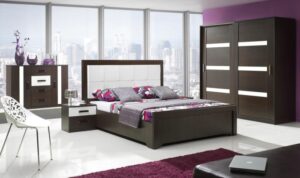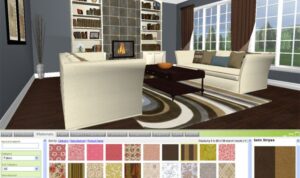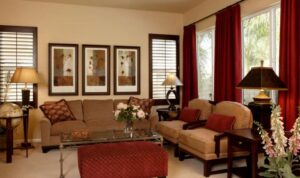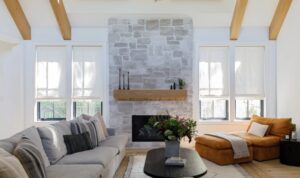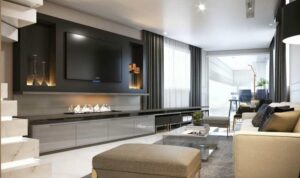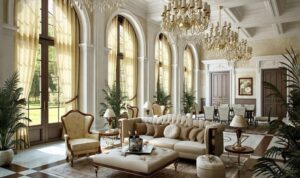Embark on a journey into the world of room decoration design, where every corner tells a story and every piece has a purpose. This guide is your key to unlocking the secrets of creating harmonious spaces that reflect your unique style and personality.
From the fundamental principles to the intricate details of color schemes, furniture layout, lighting, and accessories, this guide covers it all to help you transform any room into a stunning masterpiece.
Room Decoration Design Principles
When it comes to room decoration design, there are fundamental principles that guide the process and help create visually appealing and functional spaces. These principles ensure that the design is cohesive, balanced, and harmonious.
Key Elements to Consider
- Color scheme: Choosing a color palette that complements each other and sets the mood for the room.
- Texture: Incorporating different textures like wood, metal, fabric, and glass to add depth and interest.
- Furniture arrangement: Placing furniture in a way that allows for easy movement and conversation.
- Lighting: Utilizing both natural and artificial lighting to create ambiance and highlight key features.
The Importance of Balance, Harmony, and Scale
Maintaining balance in room decoration design ensures that visual weight is distributed evenly, creating a sense of stability. Harmony brings all elements together cohesively, while scale ensures that furniture and decor pieces are proportionate to the space.
Examples of Successful Room Decoration Designs
- A minimalist living room with neutral colors, sleek furniture, and strategic lighting that creates a sense of calm and spaciousness.
- A bohemian bedroom with layered textures, vibrant colors, and eclectic decor that exudes warmth and personality.
- A modern kitchen with clean lines, integrated appliances, and ample storage that combines form and function seamlessly.
Color Schemes and Palettes
Color schemes play a crucial role in room decoration design as they can significantly impact the overall look and feel of a space. The right color palette can enhance the style, mood, and functionality of a room, while the wrong choice can disrupt the harmony and balance of the design.When choosing a color scheme, it's essential to consider the style of the room, the size of the space, the amount of natural light, and the intended mood or atmosphere.
Different room styles may require specific color palettes to achieve the desired aesthetic. Here are some examples of popular color palettes for various room styles:
Minimalist Style
In a minimalist room, a simple and clean color palette is key. Neutral colors like white, beige, and gray are often used to create a sense of calm and simplicity. Adding a pop of color with a single bold accent can provide visual interest without overpowering the minimalist design.
Bohemian Style
Bohemian rooms are known for their eclectic and vibrant color palettes. Earthy tones like terracotta, mustard yellow, and deep greens are commonly used to create a cozy and relaxed atmosphere. Mixing patterns and textures in rich hues can add depth and warmth to a bohemian-inspired space.
Modern Style
Modern rooms often feature a monochromatic color palette with bold accents. Black, white, and shades of grey are commonly used as the base colors, while vibrant pops of color like red, blue, or yellow can be incorporated through furniture, artwork, or accessories.
This contrast creates a sleek and sophisticated look in modern interiors.When incorporating accent colors into a room, it's important to strike a balance between the dominant colors and the accents. Accent colors should complement the main color scheme and draw attention to specific elements or areas in the room.
They can be introduced through throw pillows, rugs, artwork, or decorative objects to add personality and visual interest to the space.
Furniture and Layout Planning
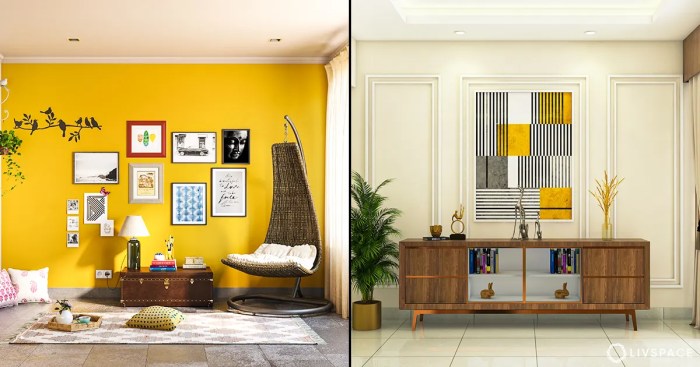
When it comes to room decoration, selecting the right furniture and planning its layout are crucial aspects that can significantly impact the overall look and functionality of a space. Here are some tips and insights to help you make the most of your furniture choices and arrangements:
Selecting Complementary Furniture
Choosing furniture that complements the room's design theme is essential for creating a cohesive and harmonious look. Consider the style, color, and material of the furniture pieces to ensure they align with the overall aesthetic you want to achieve.
For example, if you have a modern and minimalist design theme, opt for furniture with clean lines, sleek finishes, and neutral colors to maintain the contemporary vibe.
Significance of Furniture Layout
The layout of furniture plays a key role in optimizing space and functionality within a room. Proper furniture arrangement can help create a sense of balance, flow, and visual interest while maximizing the available space.
Strategic placement of furniture can also enhance the functionality of the room by ensuring easy access to key areas and promoting efficient traffic flow.
Creating a Focal Point
Utilizing furniture and decor to create a focal point in a room can draw attention and add visual interest. Choose a key piece of furniture or an eye-catching decor item to serve as the focal point and build the room's design around it.
For instance, a statement sofa, a unique coffee table, or a striking piece of artwork can all be used as focal points to anchor the room and add personality.
Examples of Furniture Arrangements
Depending on the size and purpose of the room, different furniture arrangements can be implemented to optimize space and functionality. Here are some examples:
- In a small living room, consider a sectional sofa to maximize seating without overcrowding the space. Add a couple of accent chairs and a compact coffee table to complete the arrangement.
- For a spacious bedroom, create a cozy reading nook by placing a comfortable armchair next to a stylish floor lamp and a small side table. This arrangement offers a relaxing spot for reading or unwinding.
- In a multi-functional home office, use a modular desk with storage solutions to maximize workspace. Pair it with ergonomic seating and shelving units to create an organized and efficient work environment.
Lighting and Accessories
When it comes to room decoration design, lighting plays a crucial role in setting the mood and enhancing the overall ambiance of a space. Proper lighting can highlight key features, create focal points, and even make a room feel more spacious.
Types of Lighting Fixtures and Their Impact
There are various types of lighting fixtures that can be used to enhance the design of a room. Here are a few examples:
- Chandeliers: These elegant fixtures can add a touch of sophistication and serve as a statement piece in a room.
- Wall Sconces: Perfect for adding ambient lighting and creating a cozy atmosphere.
- Table Lamps: Ideal for task lighting and adding a decorative element to a space.
Incorporating Accessories
Accessories like rugs, curtains, and artwork can elevate the design of a room and tie everything together. Here are some ideas on how to incorporate them:
- Rugs: Choose a rug that complements the color scheme of the room and adds texture and warmth to the space.
- Curtains: Opt for curtains that enhance the natural light coming into the room and add a touch of elegance.
- Artwork: Select pieces of artwork that reflect your personal style and add visual interest to the walls.
Using Mirrors and Reflective Surfaces
Mirrors and other reflective surfaces can help enhance lighting in a room and create the illusion of more space. Here's how you can use them effectively:
- Place mirrors strategically to reflect natural light and brighten up the room.
- Use mirrored furniture or accessories to add a touch of glamour and create depth in a space.
- Consider incorporating metallic finishes or glass elements to further enhance the reflective quality of the room.
Ultimate Conclusion
As we conclude this exploration of room decoration design, remember that a well-designed room is not just about aesthetics—it's about creating a sanctuary that resonates with your soul. Let your creativity soar and your imagination run wild as you embark on your own design journey.
FAQ Section
How important is balance in room decoration design?
Balance is crucial in room decoration design as it helps create a sense of visual equilibrium and harmony, ensuring that no single element overpowers the space.
What role does lighting play in room decoration design?
Lighting is essential in setting the mood and highlighting key elements in a room. It can also enhance the overall ambiance and create a welcoming atmosphere.
How do you choose the right color scheme for a room?
Consider the room size, lighting conditions, and desired mood when selecting a color scheme. Opt for colors that complement each other and align with the room's purpose.
Why is furniture layout important in room decoration design?
The layout of furniture can significantly impact the flow and functionality of a room. Properly arranging furniture ensures optimal use of space and enhances the overall design.
How can accent colors be effectively incorporated into room decoration design?
Accent colors can be added through accessories, accent walls, or small decor pieces to create visual interest and a pop of color without overwhelming the space.

